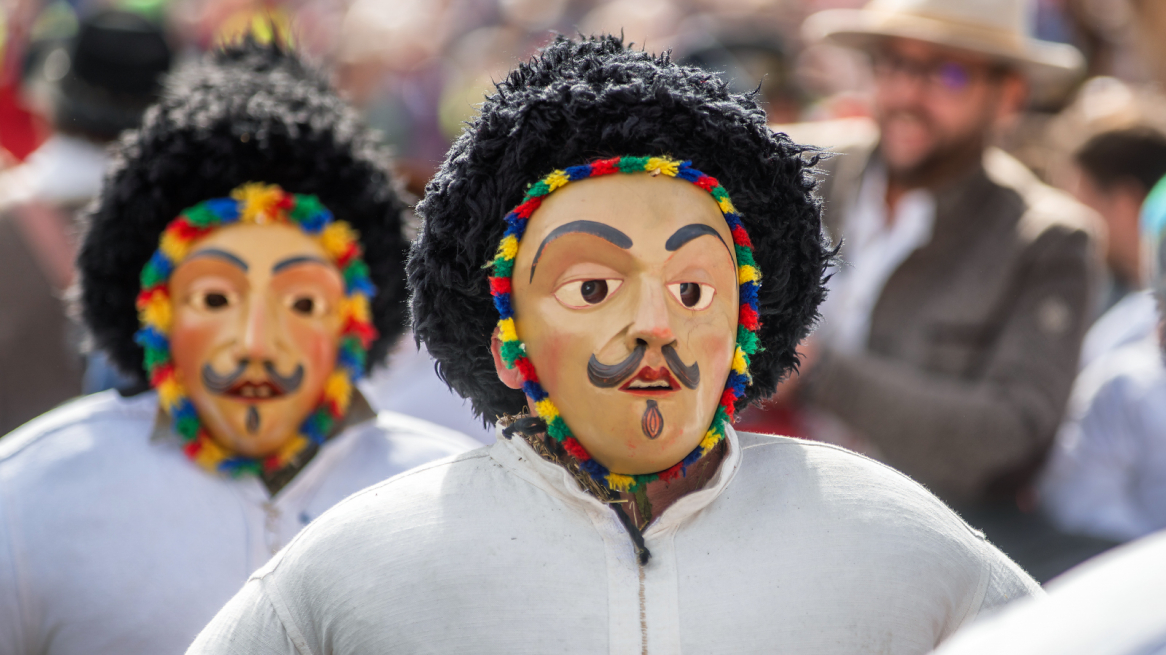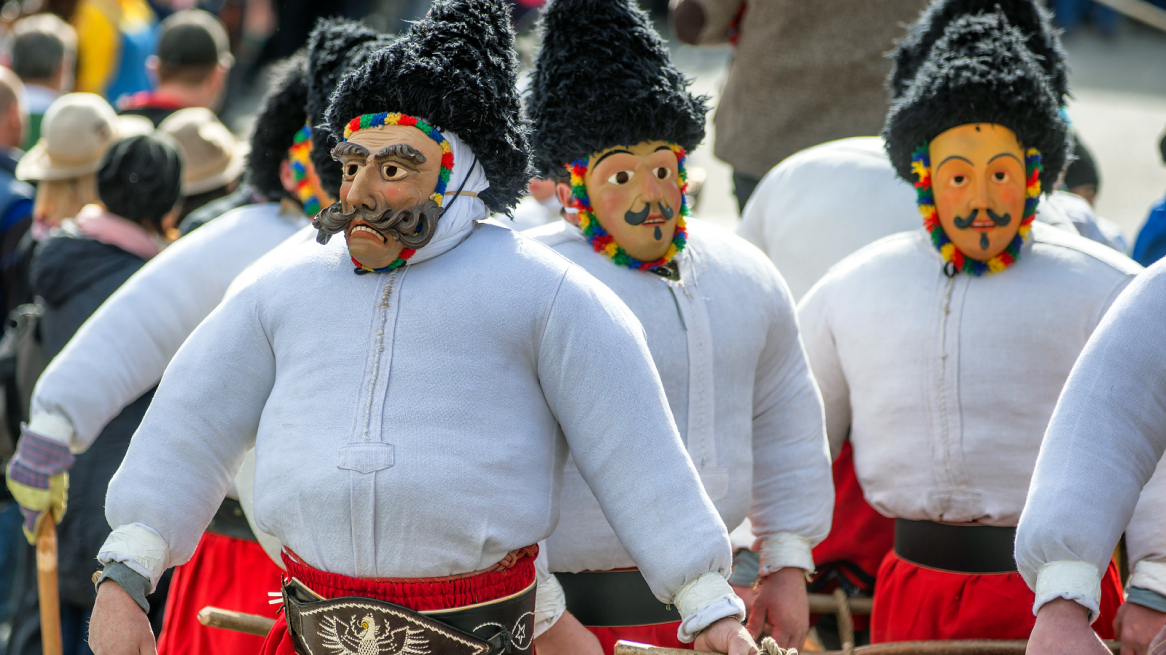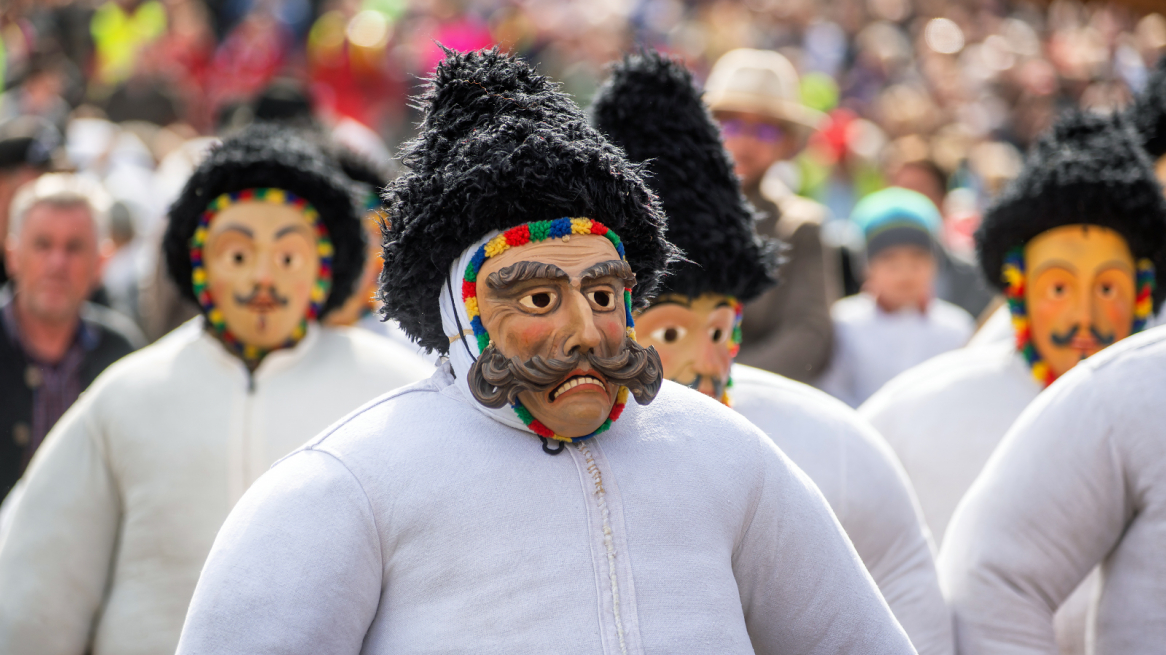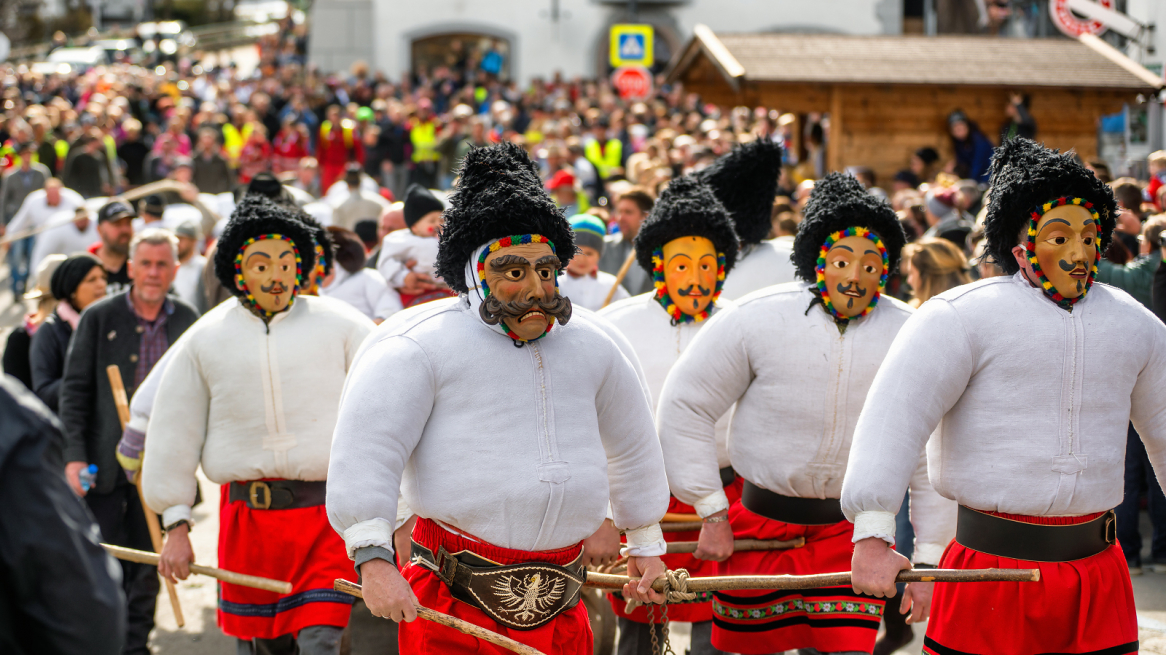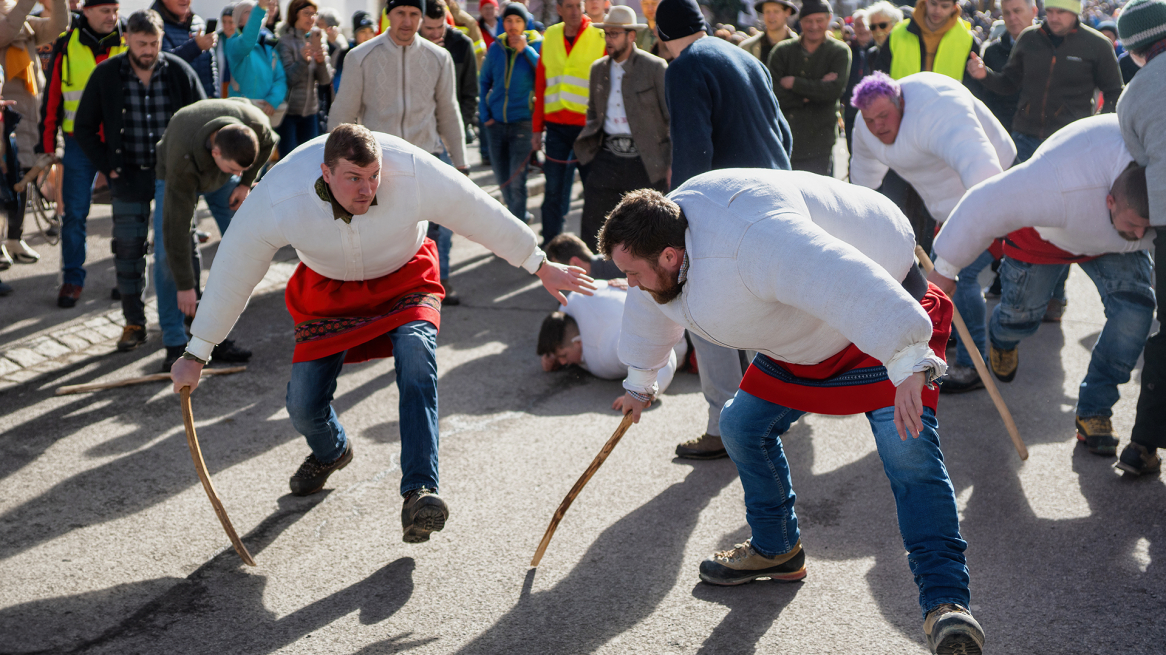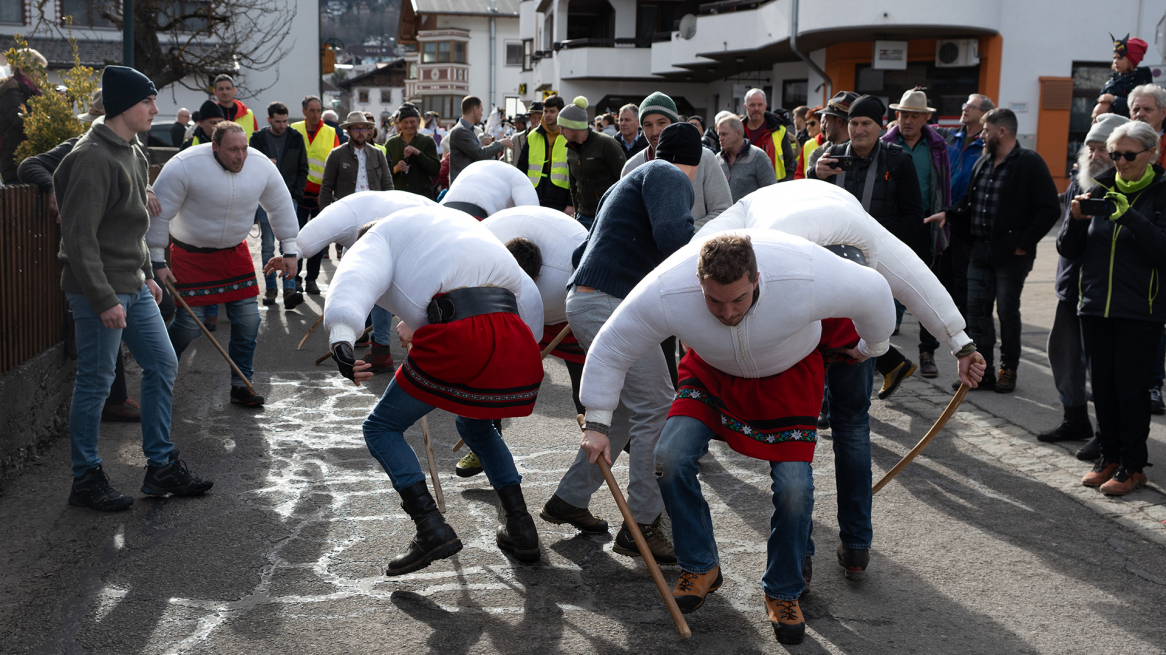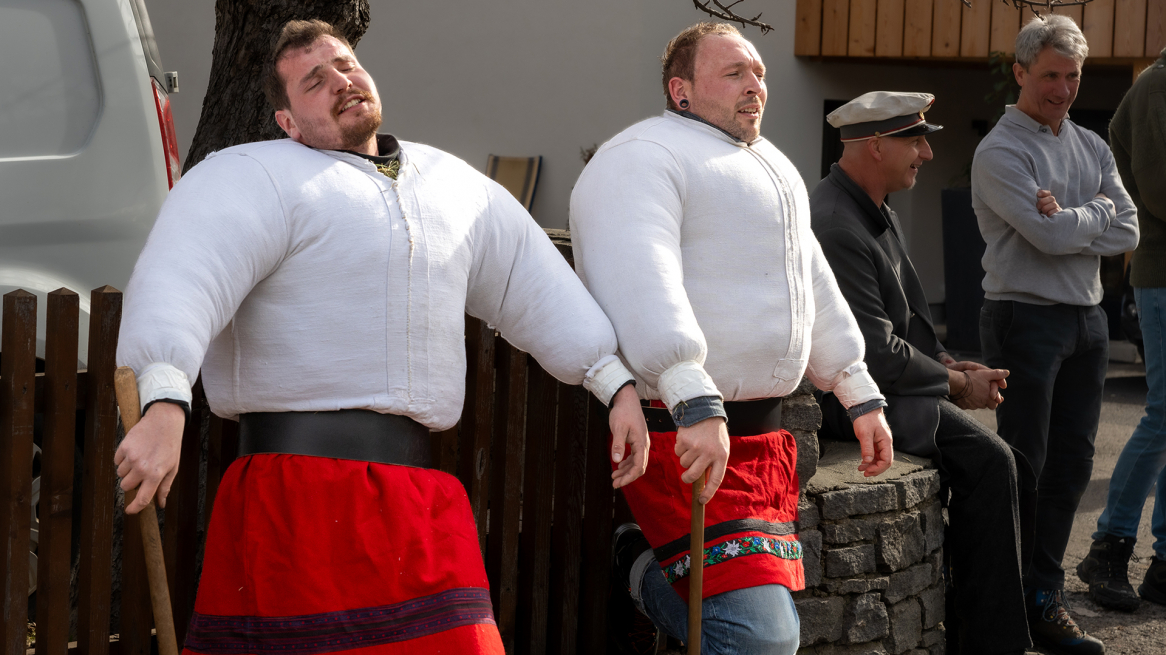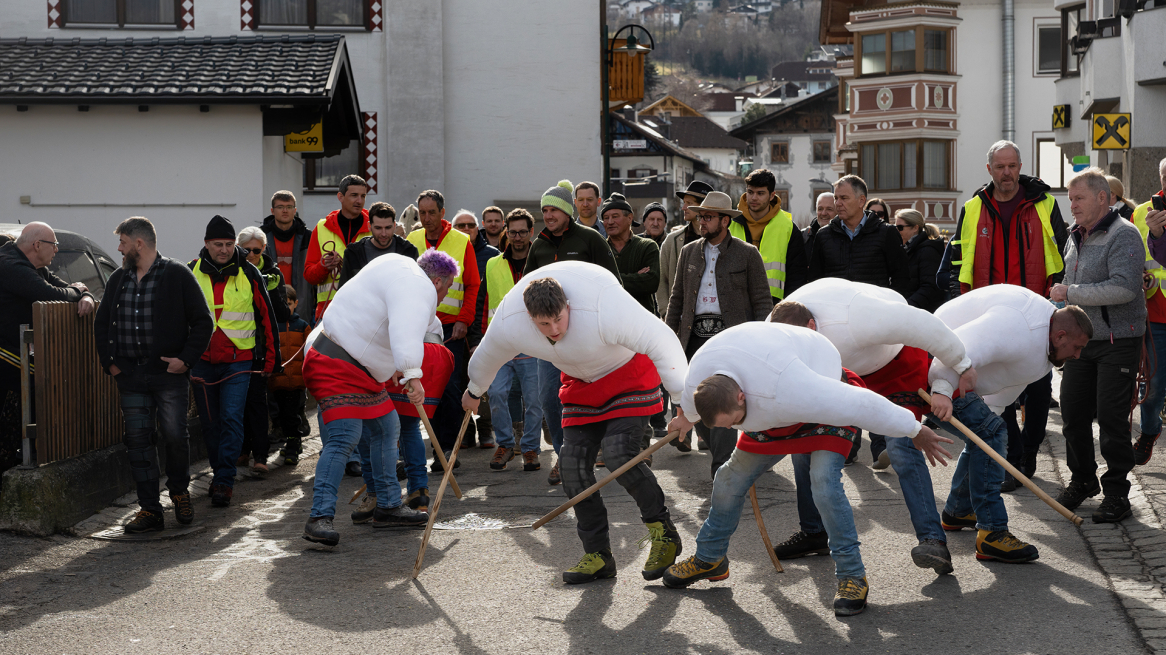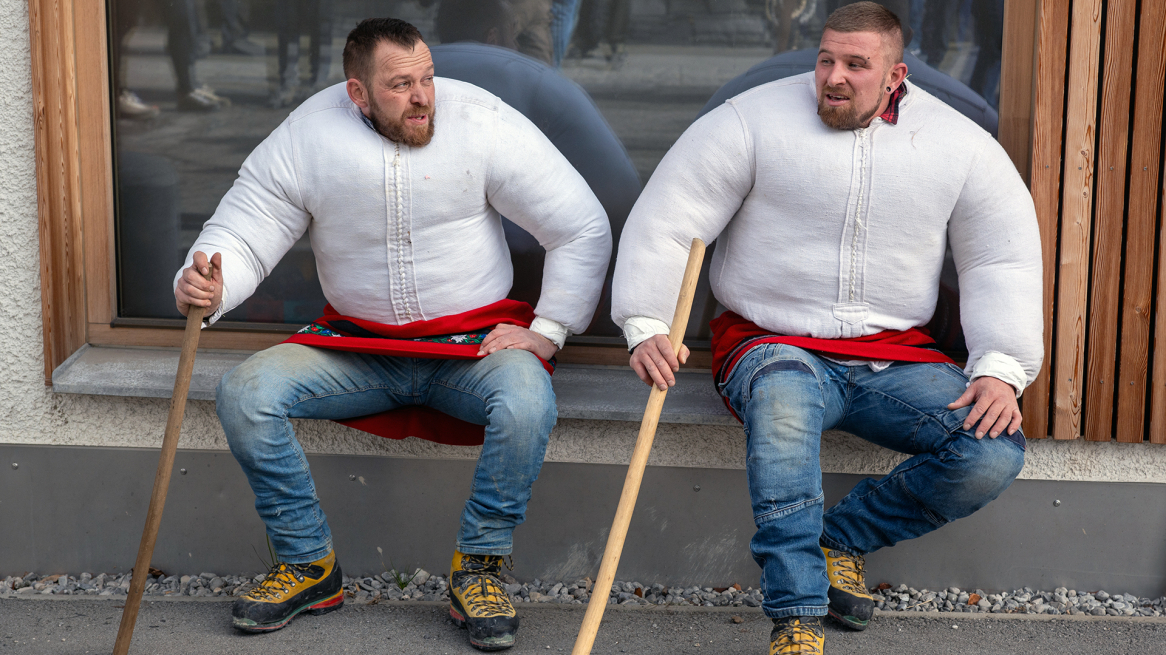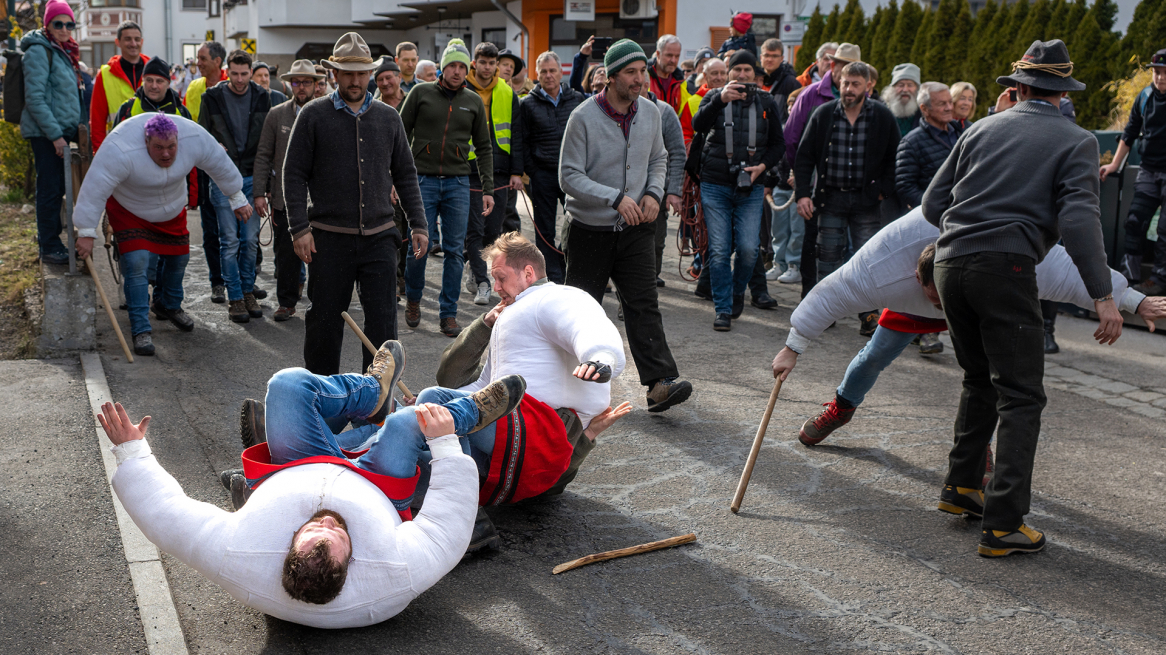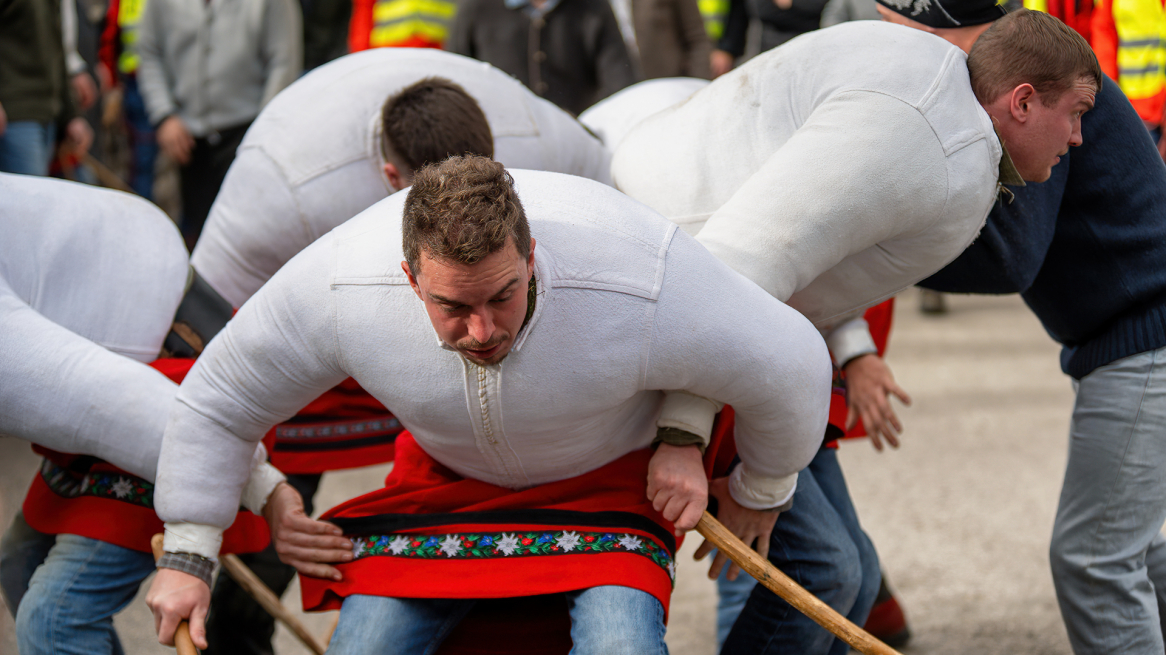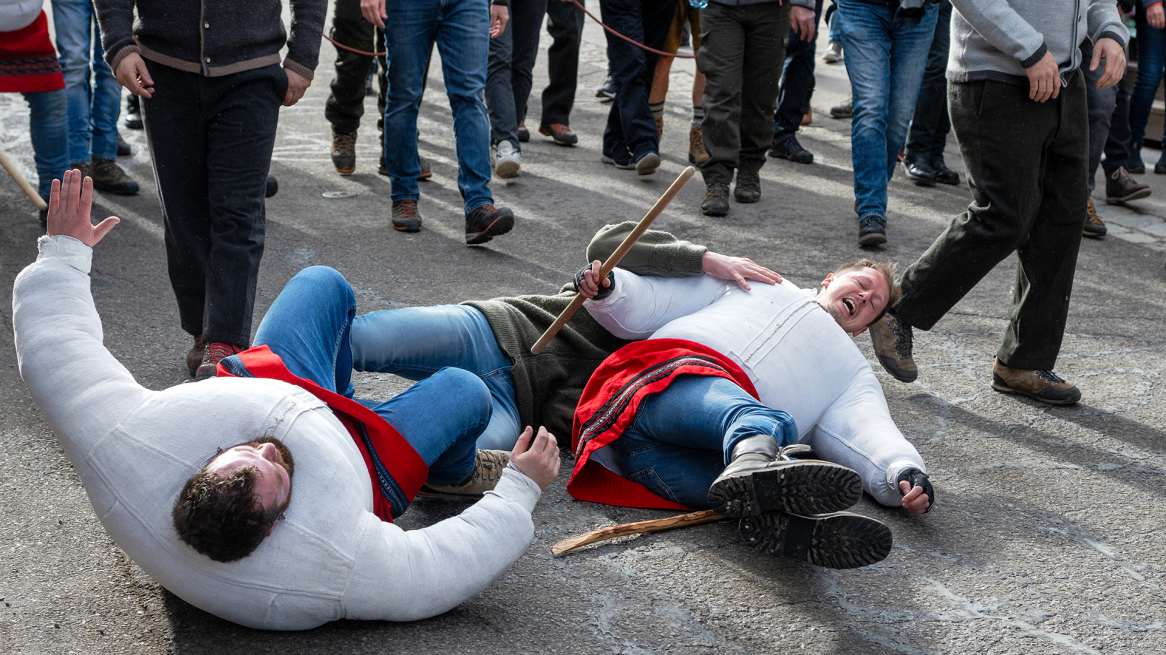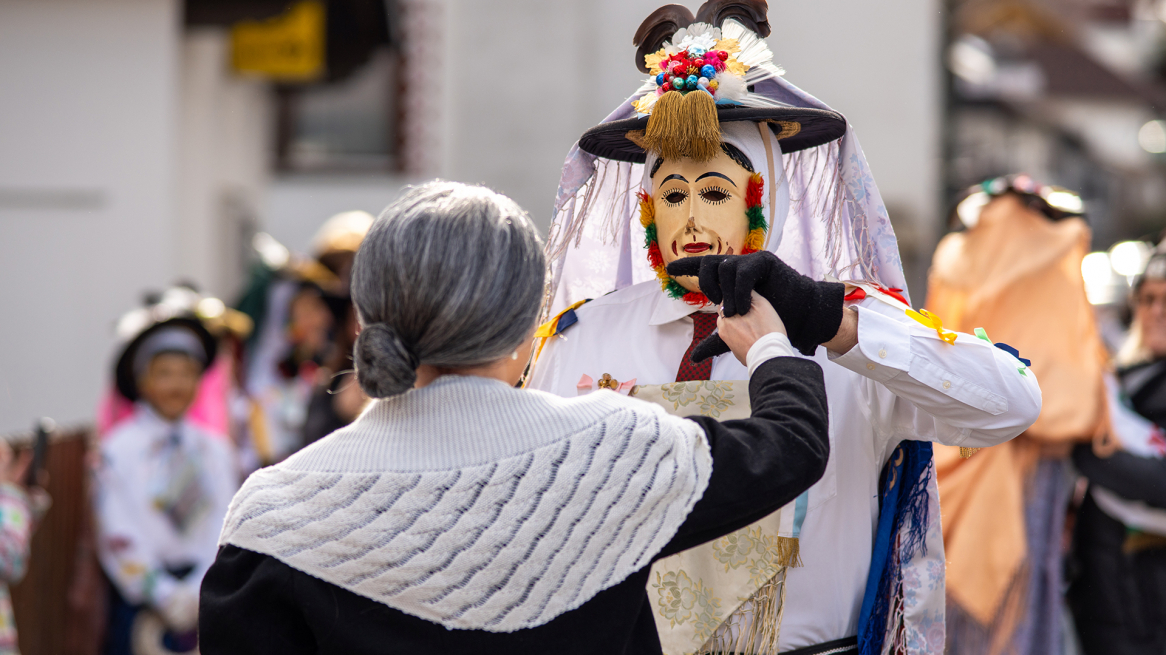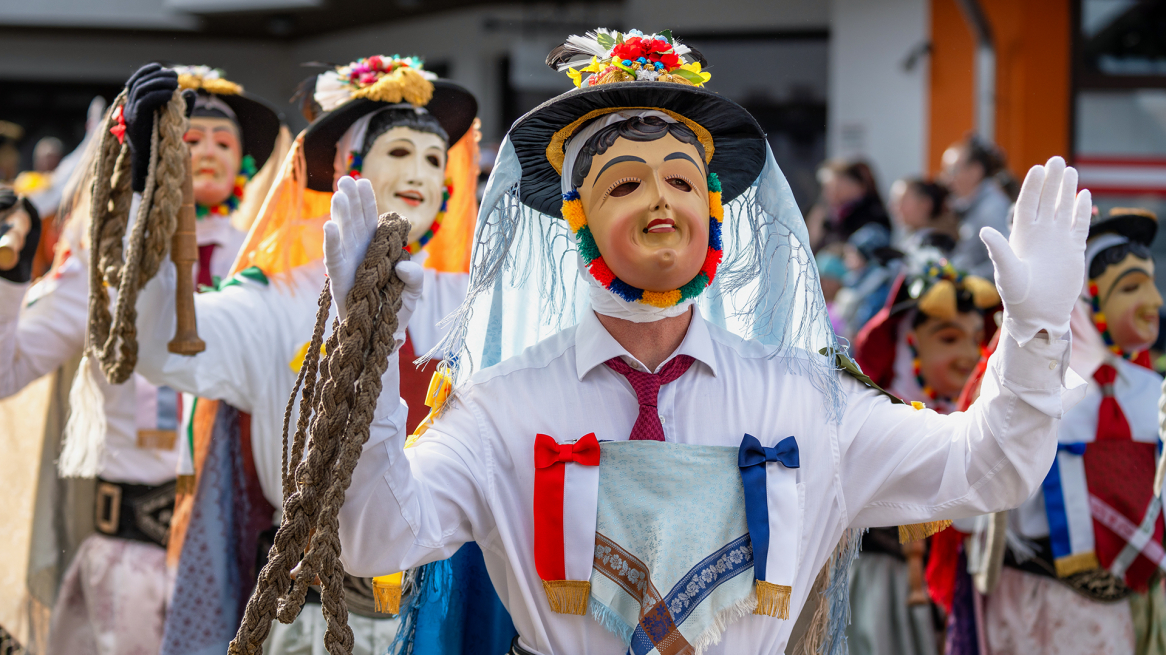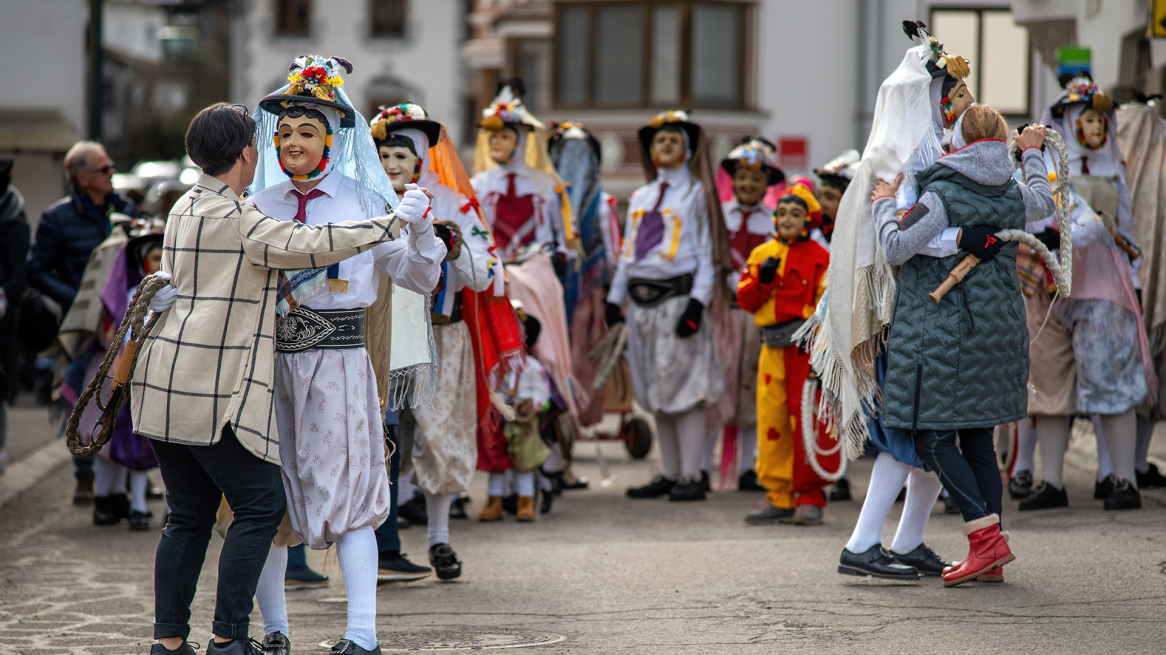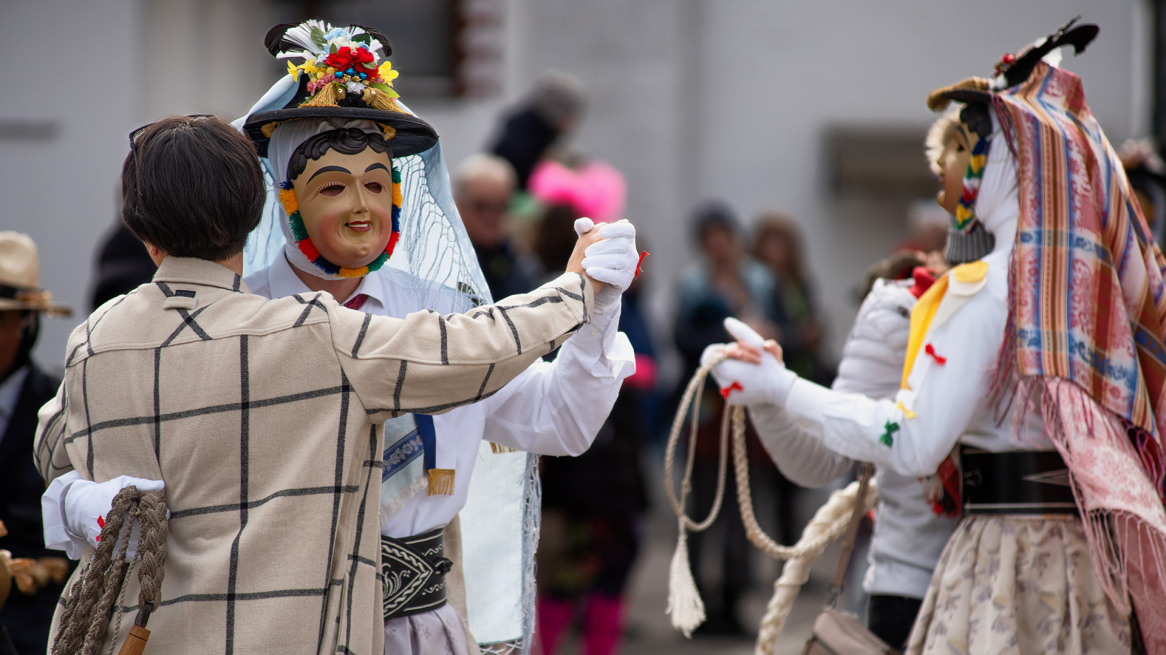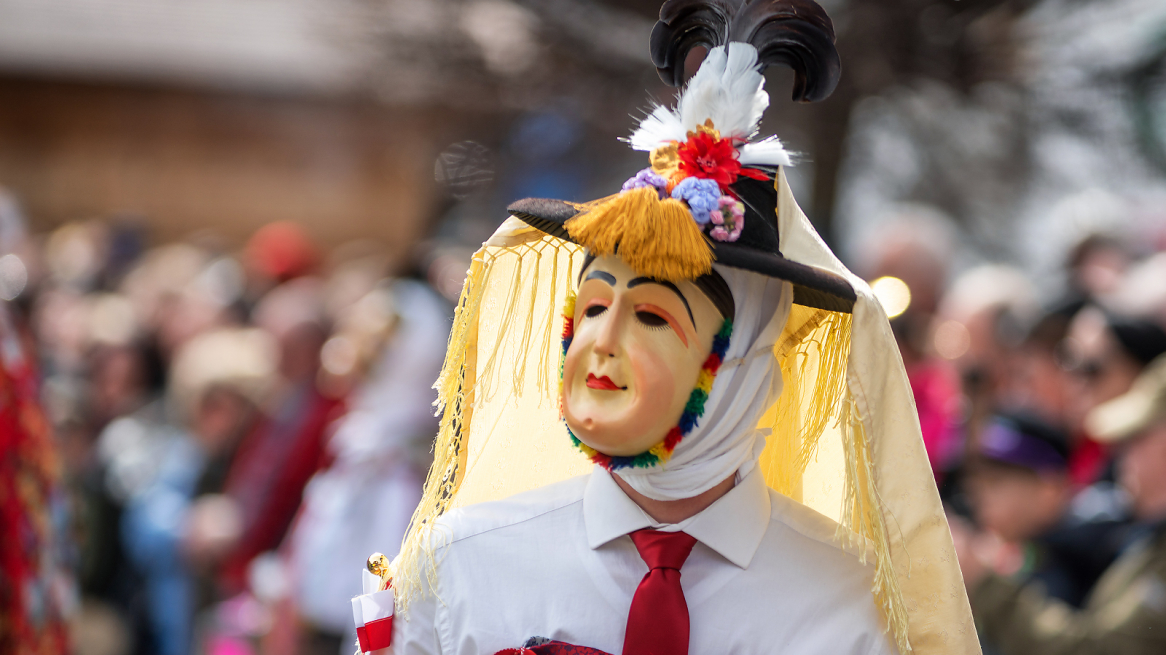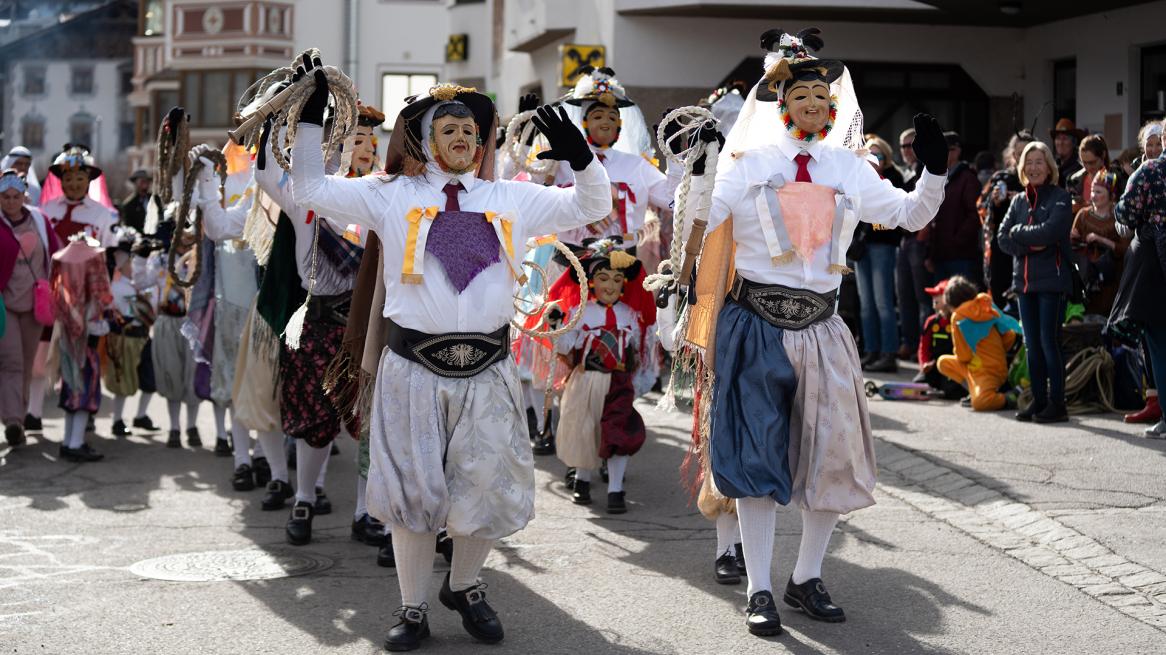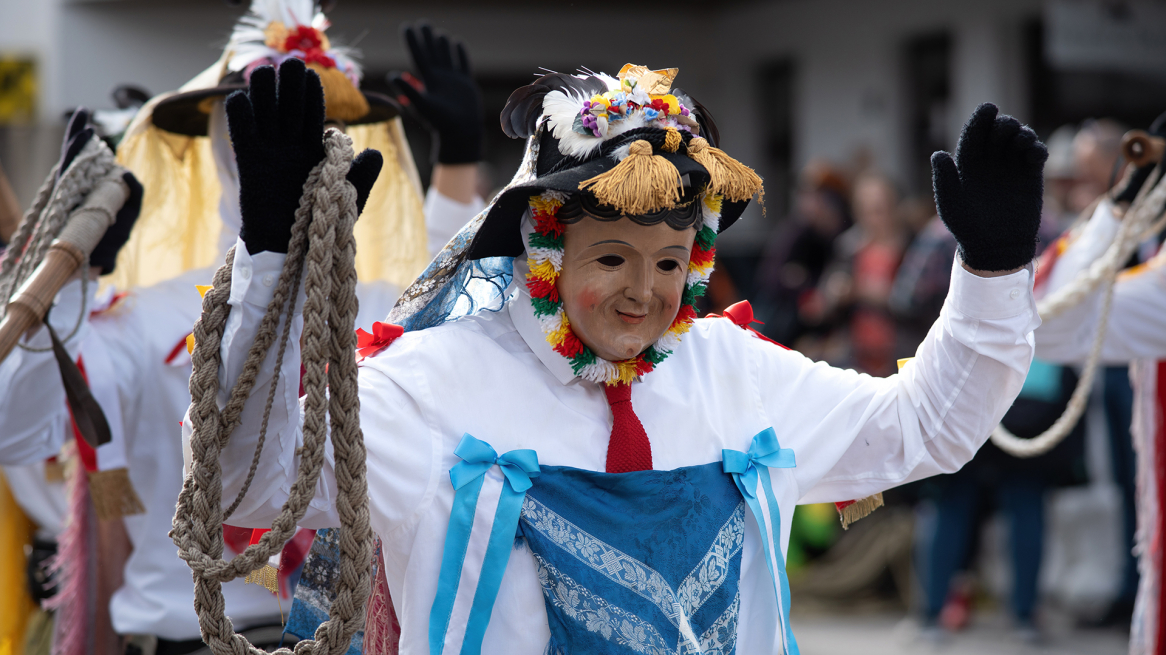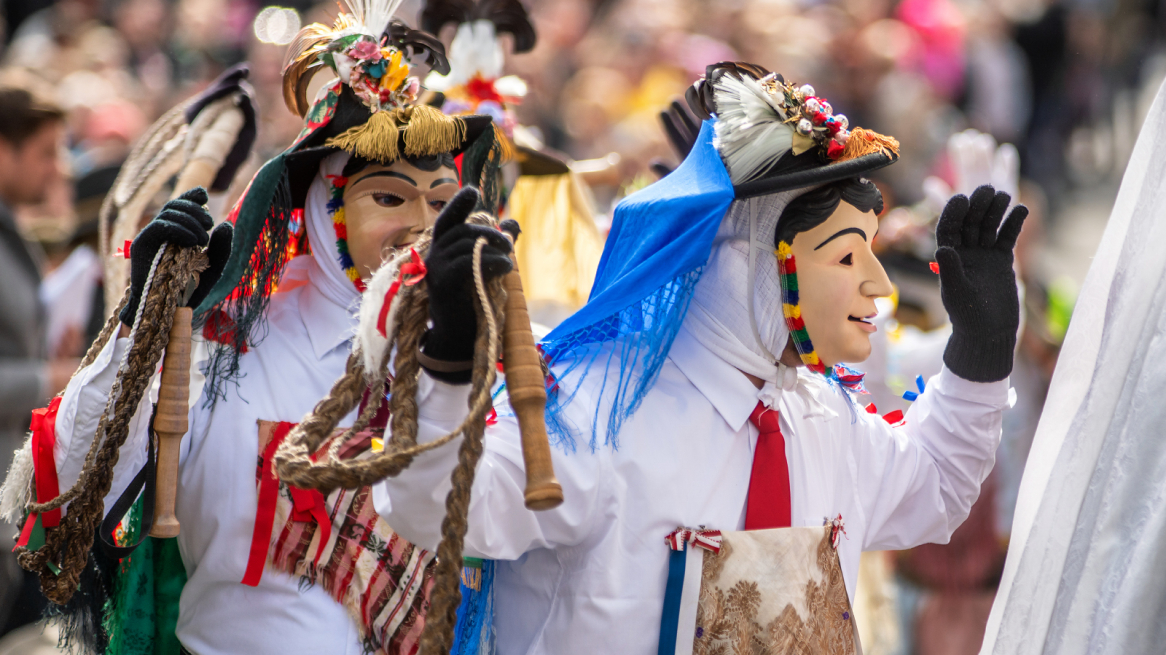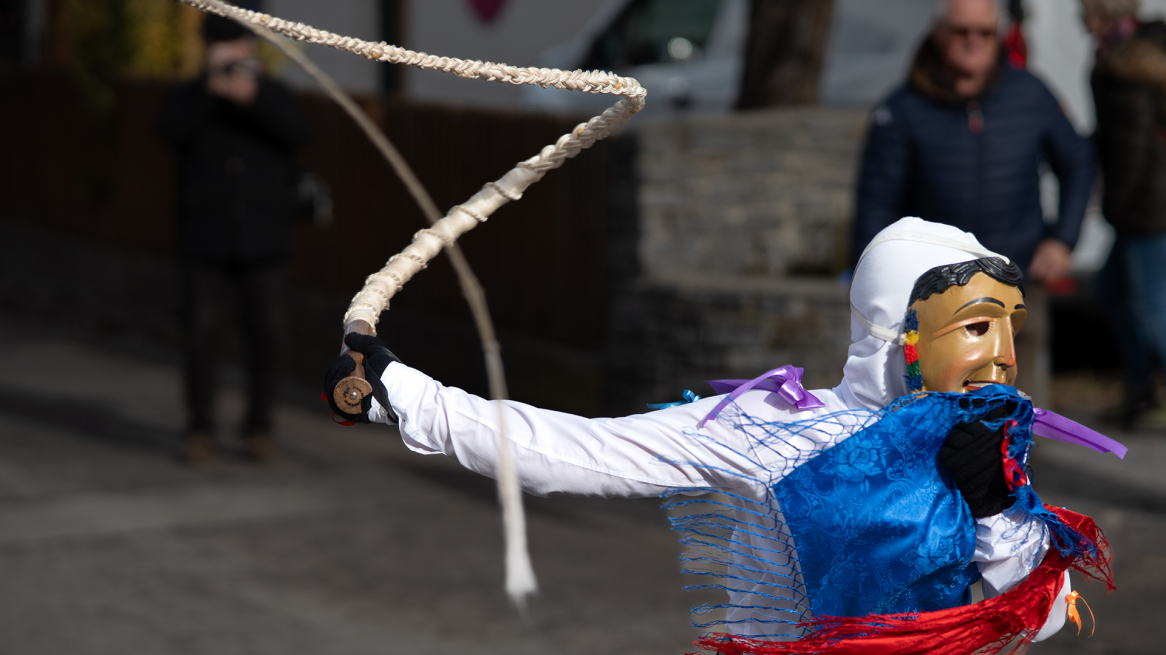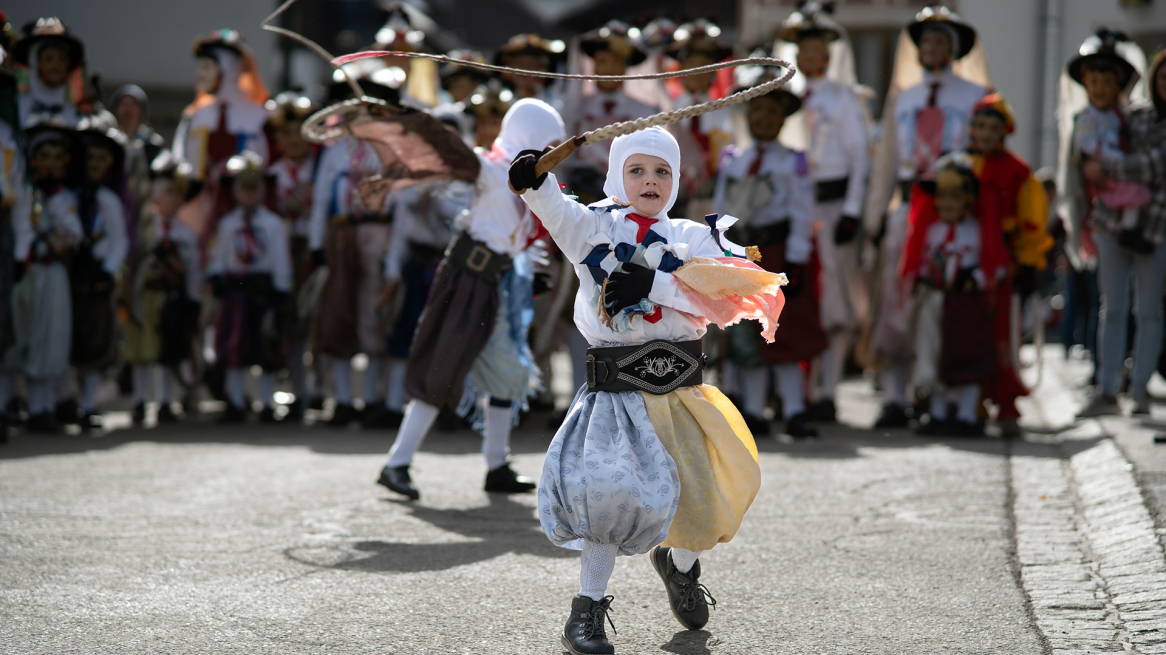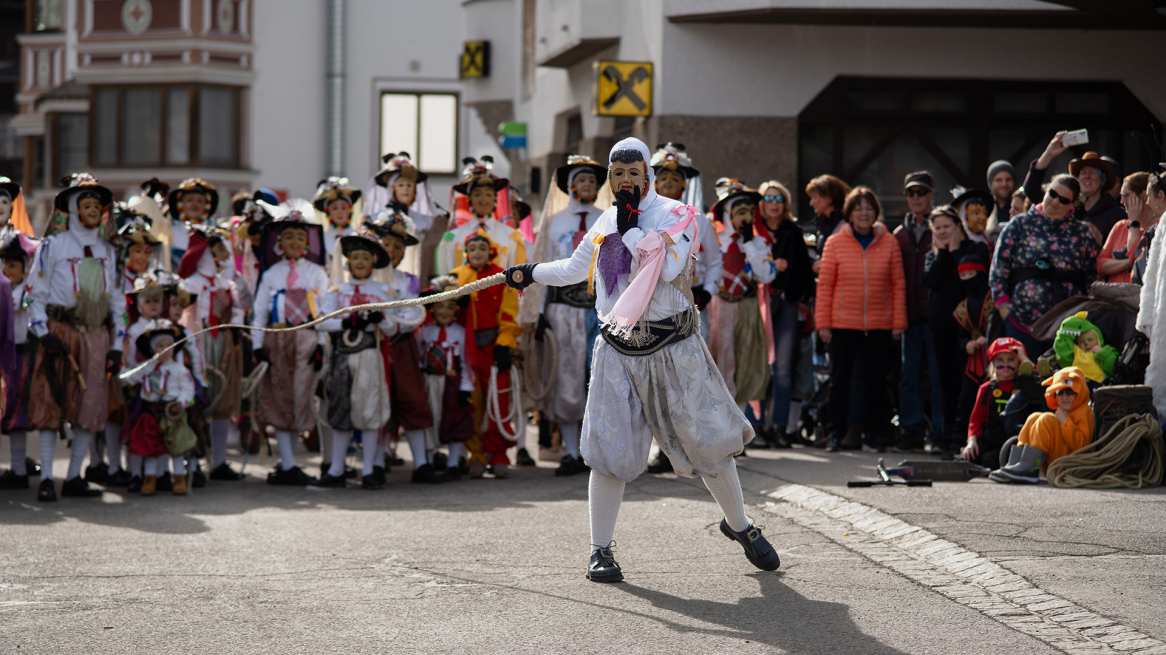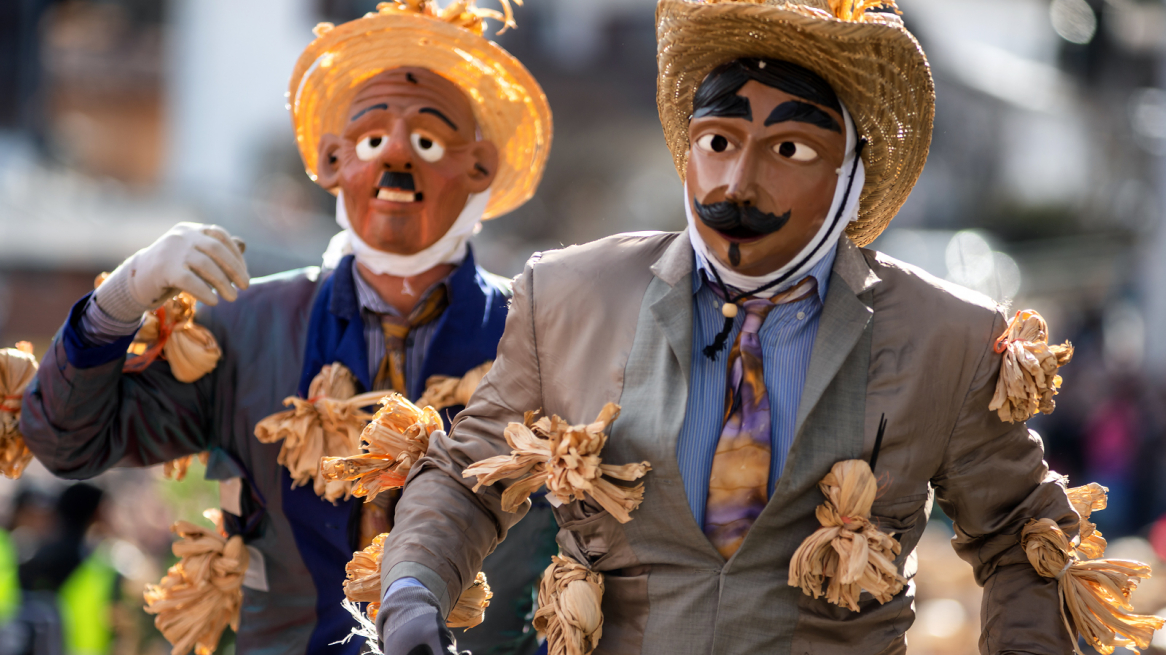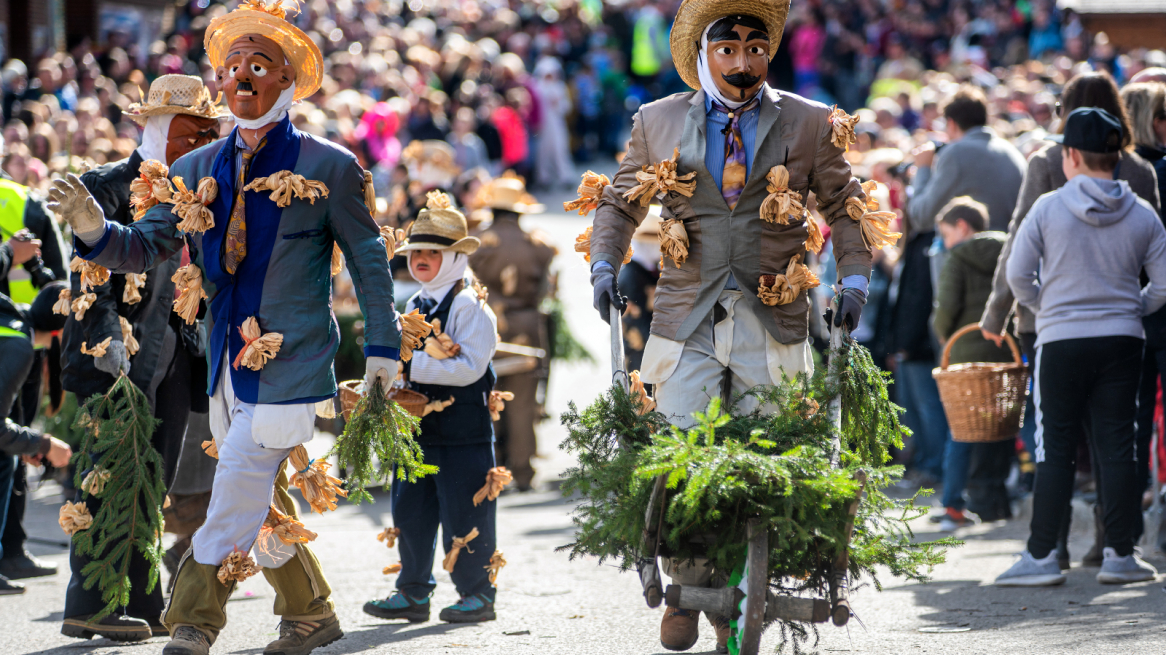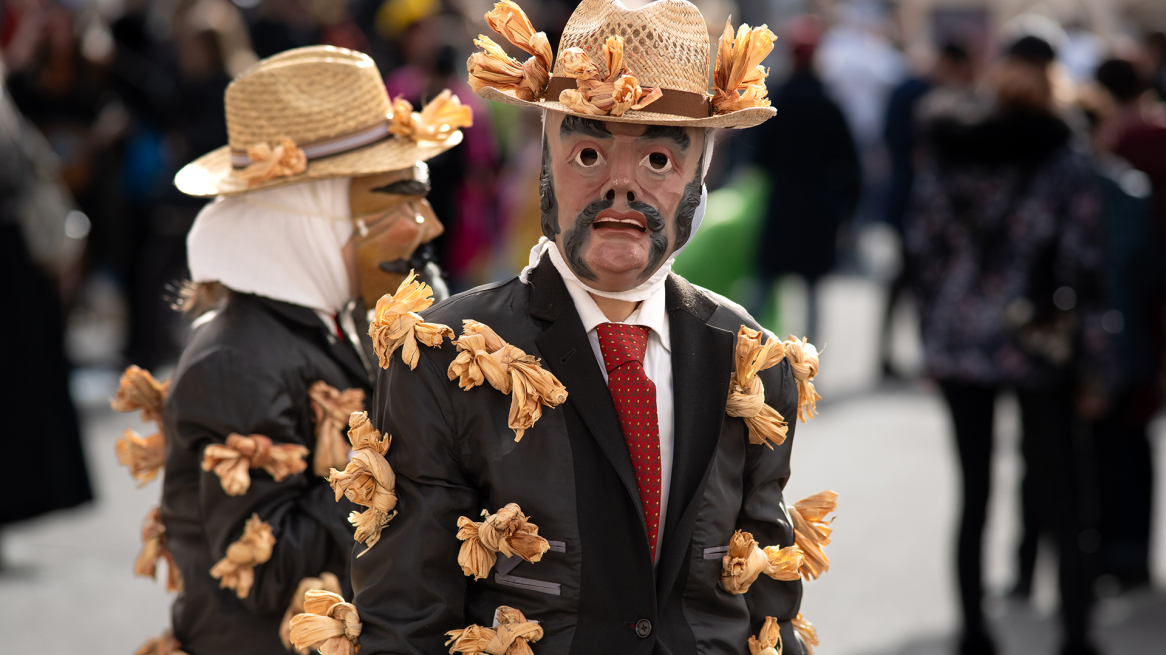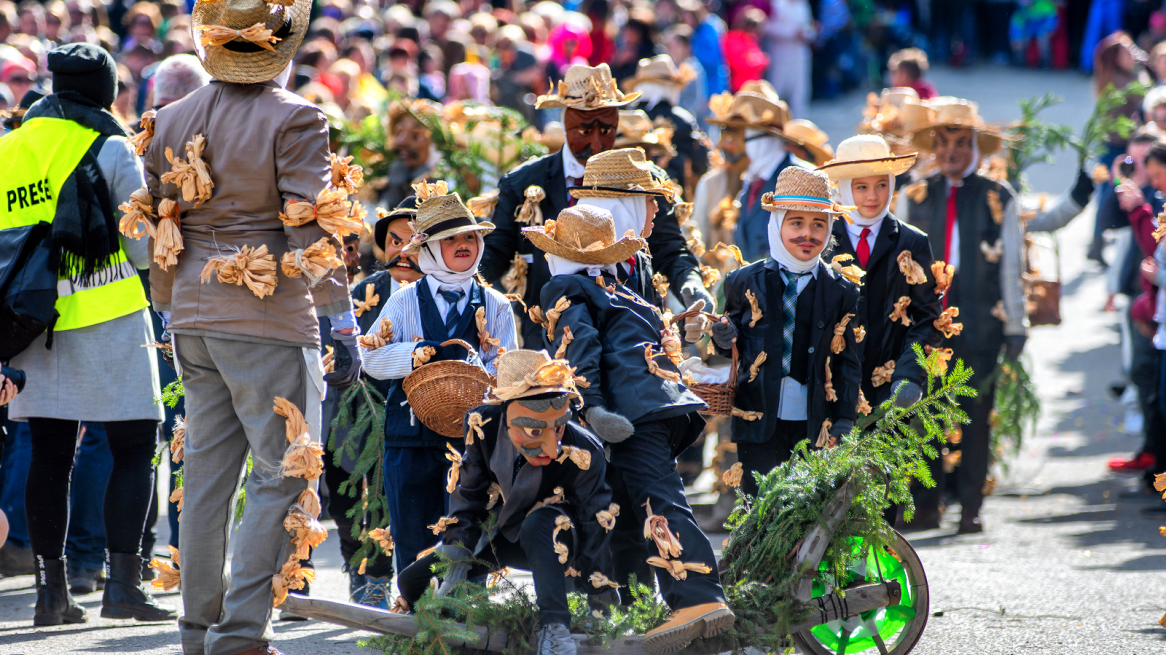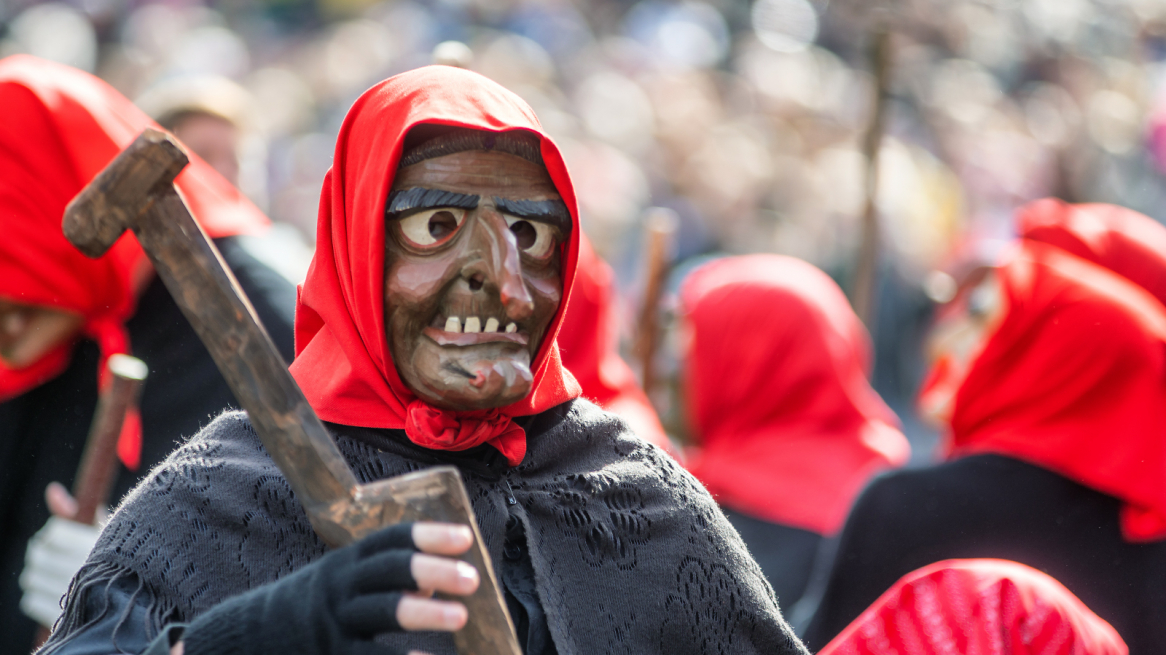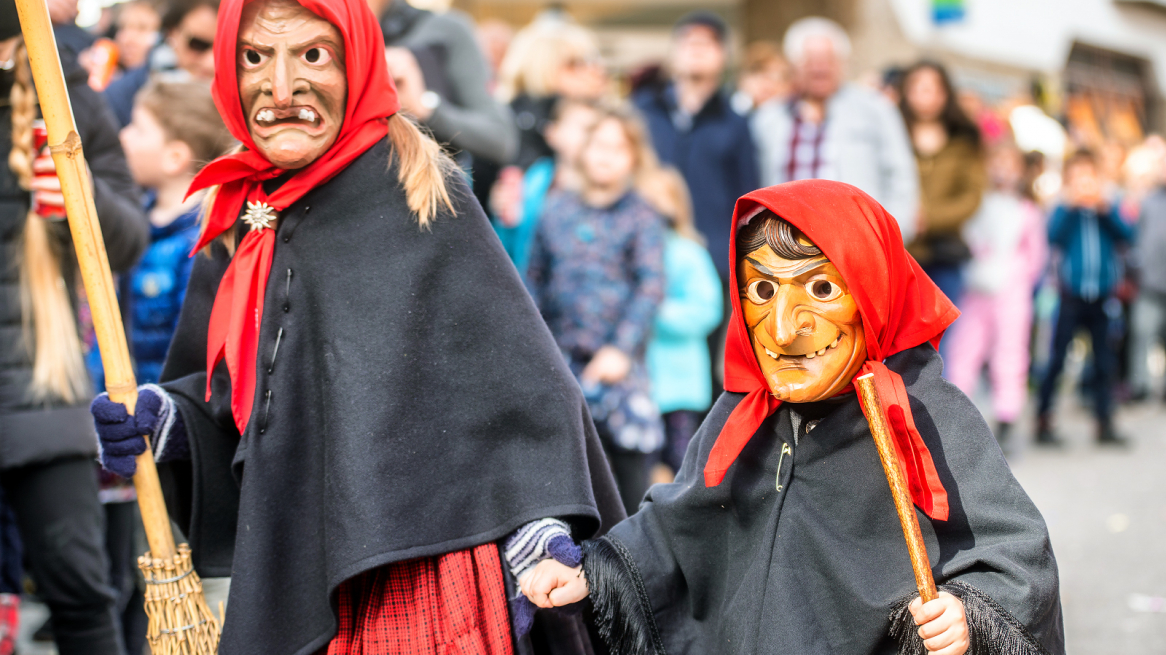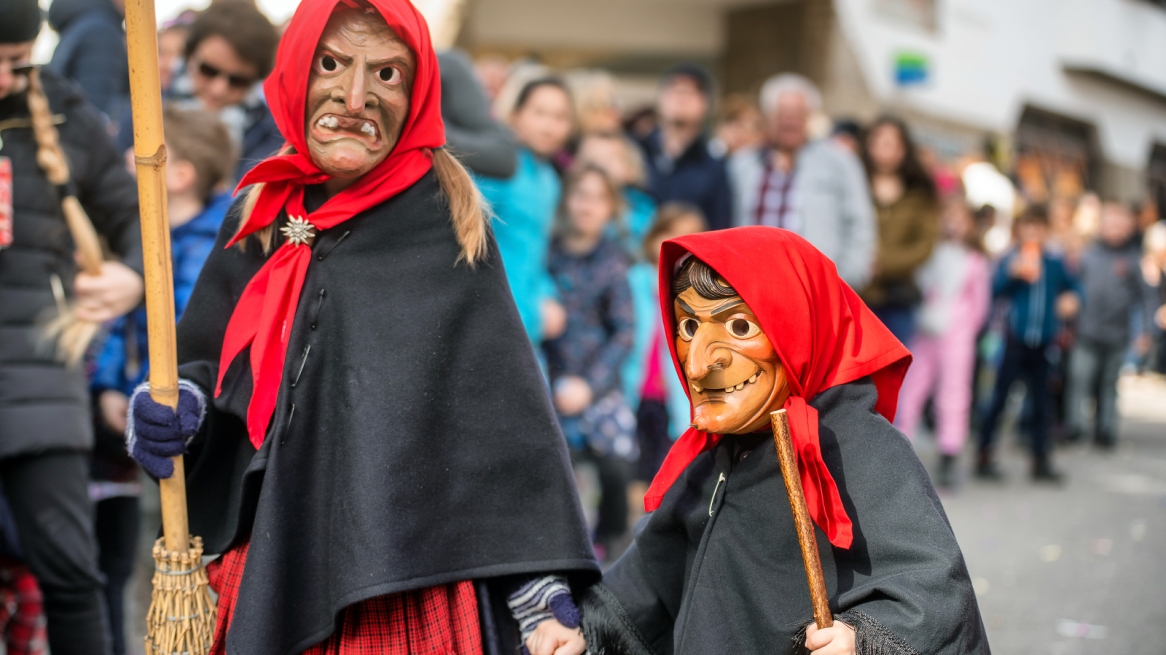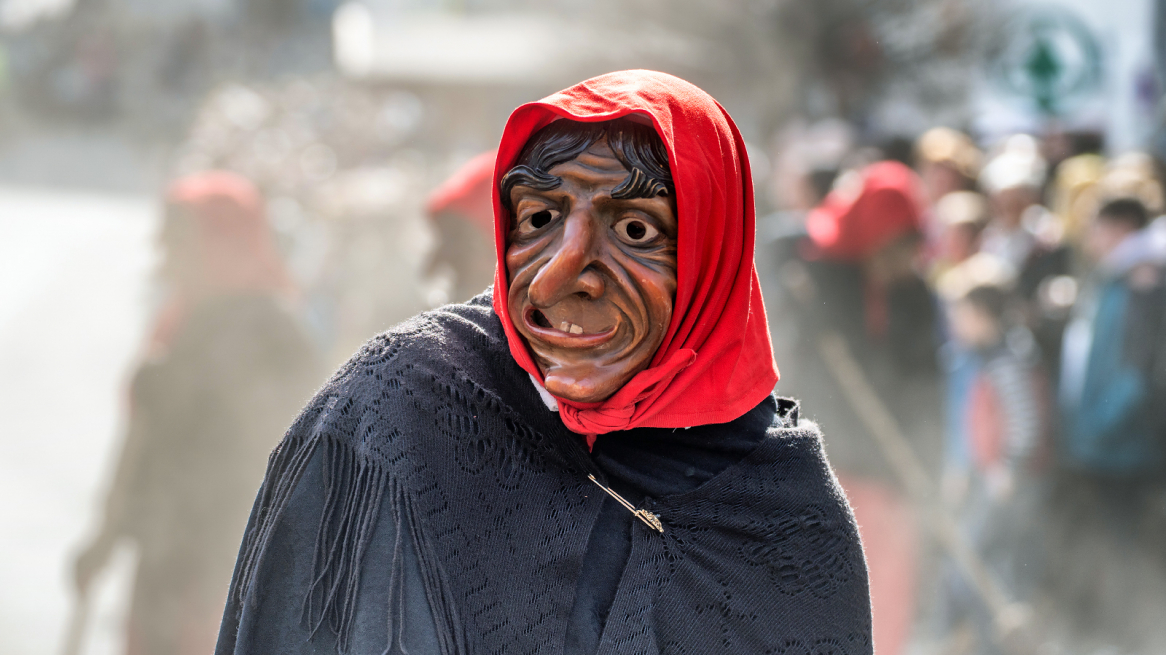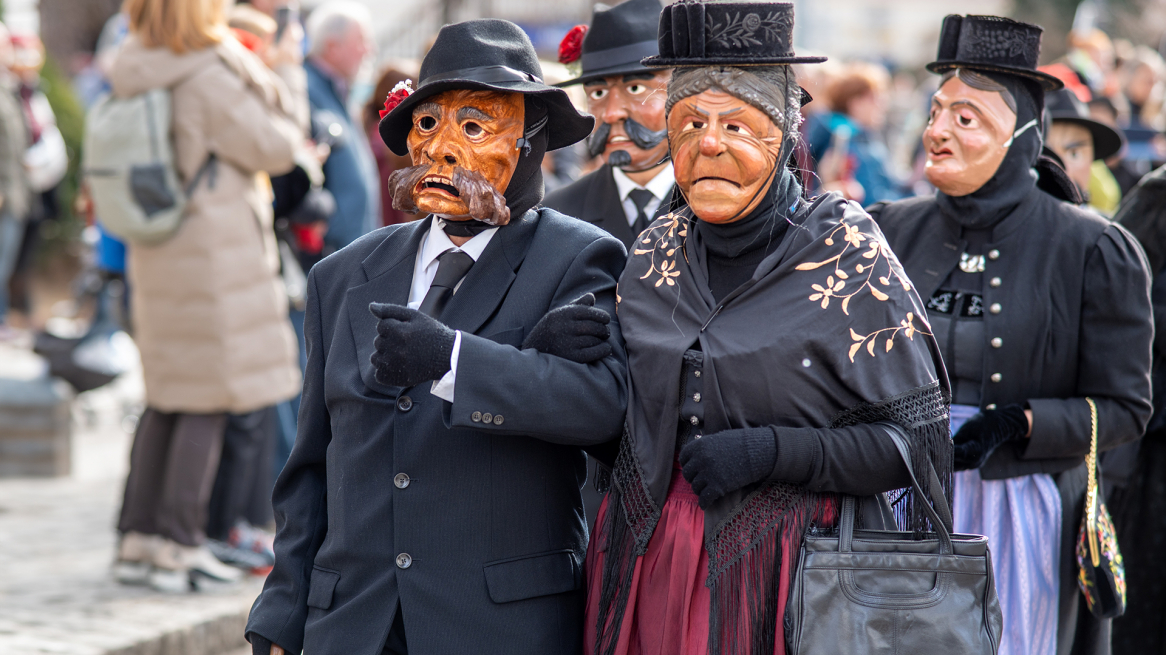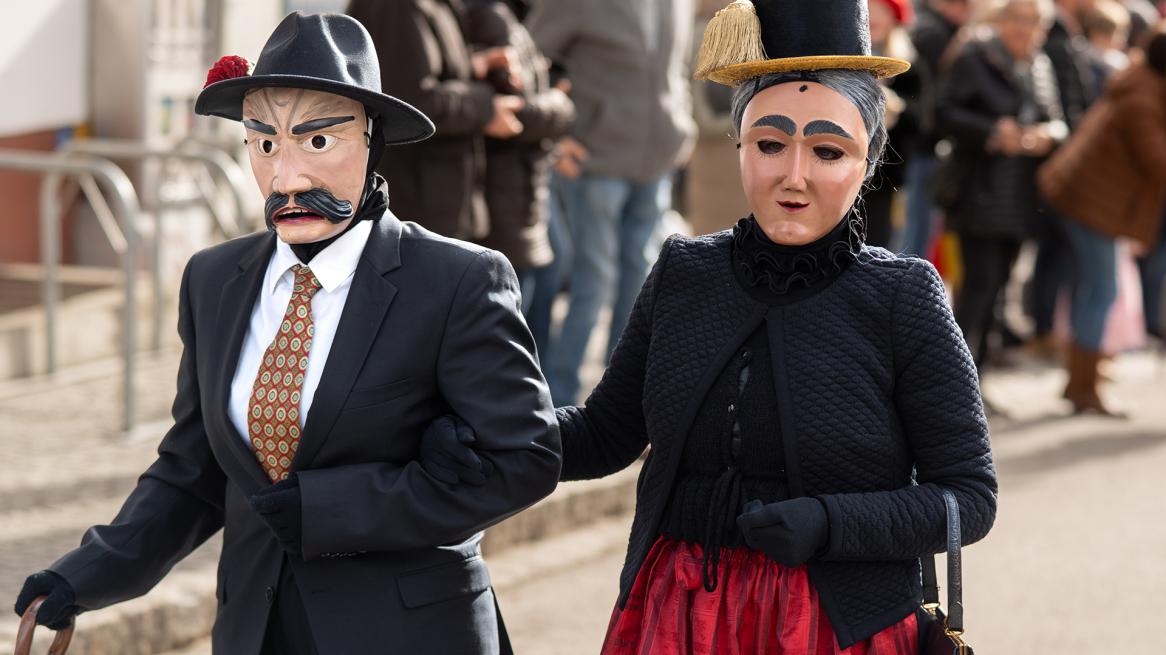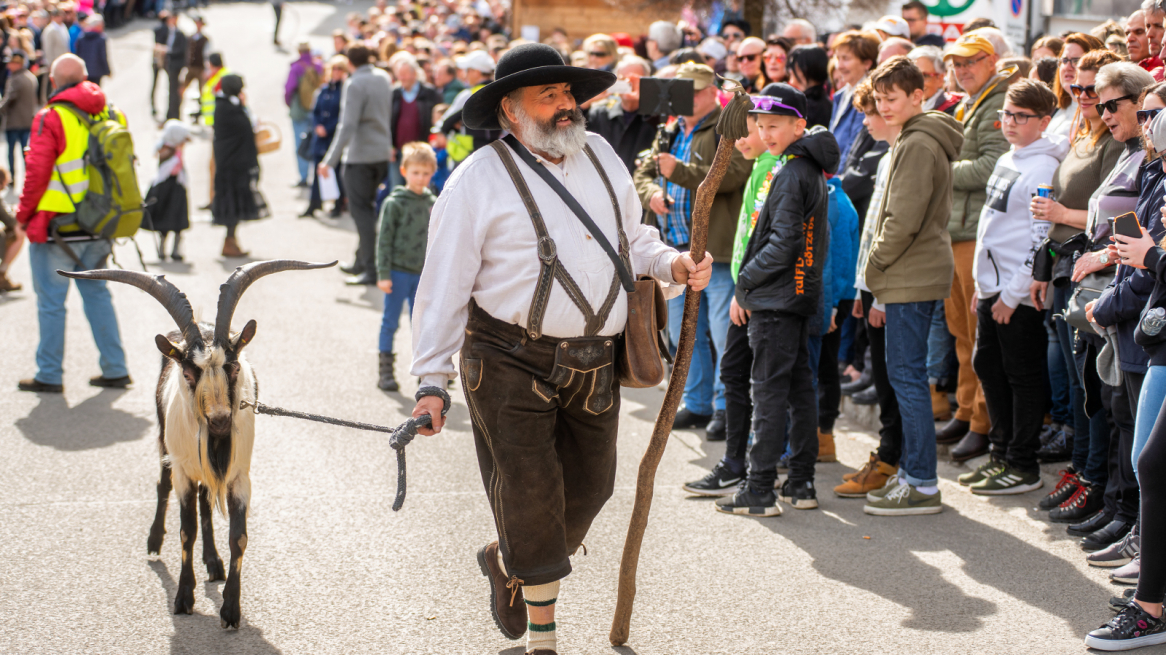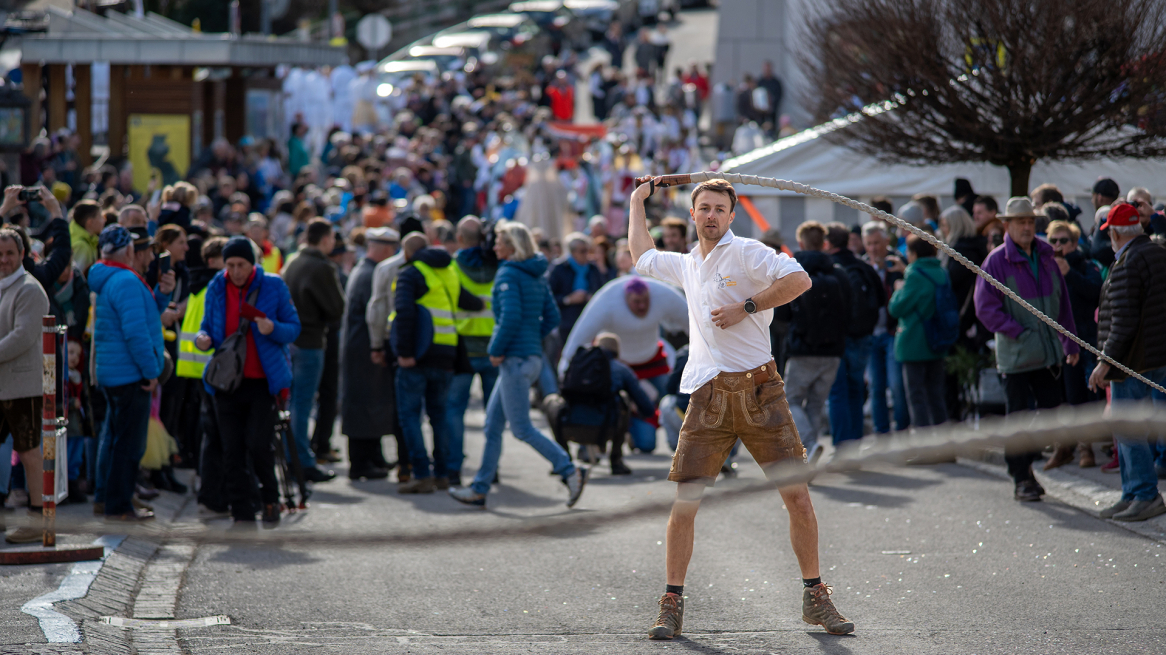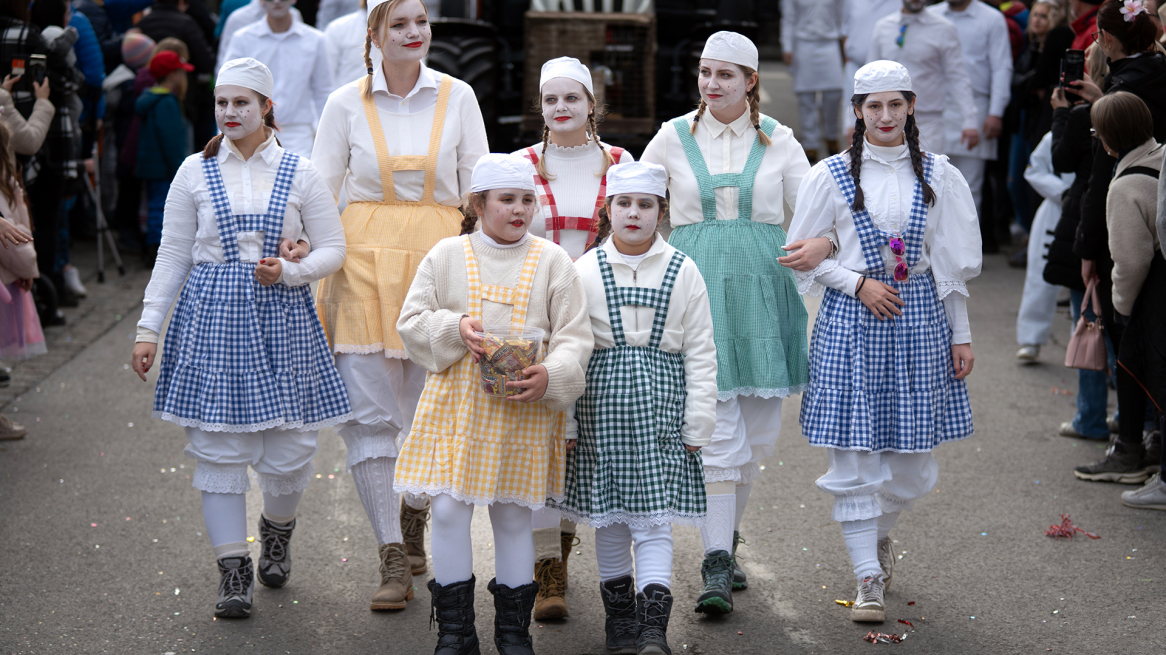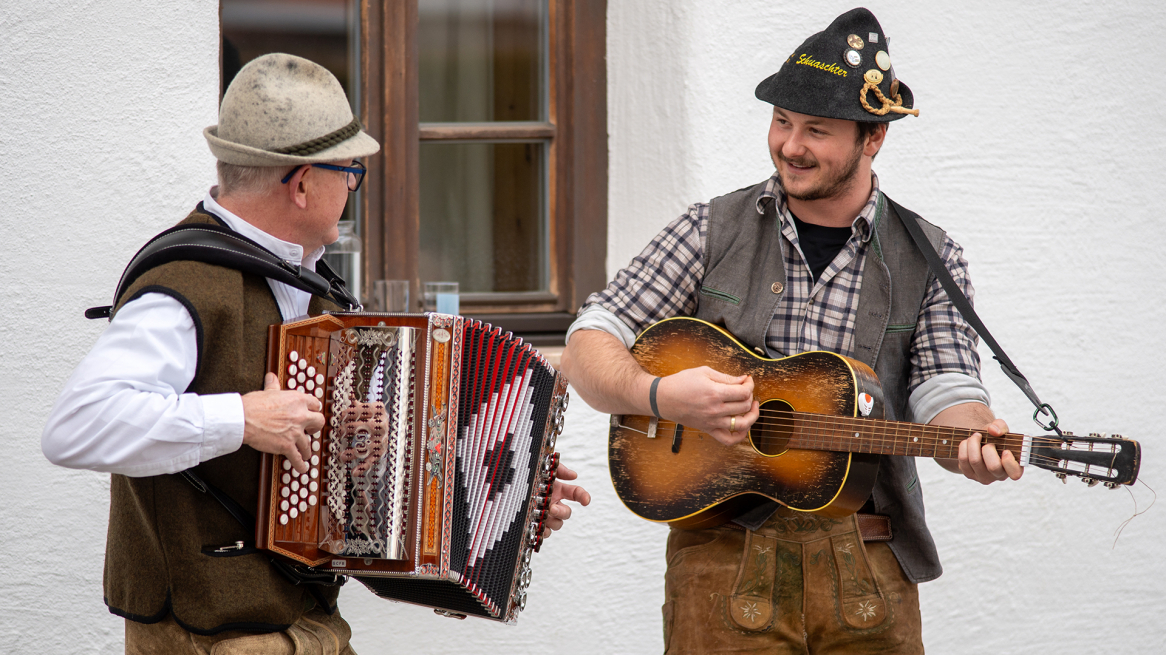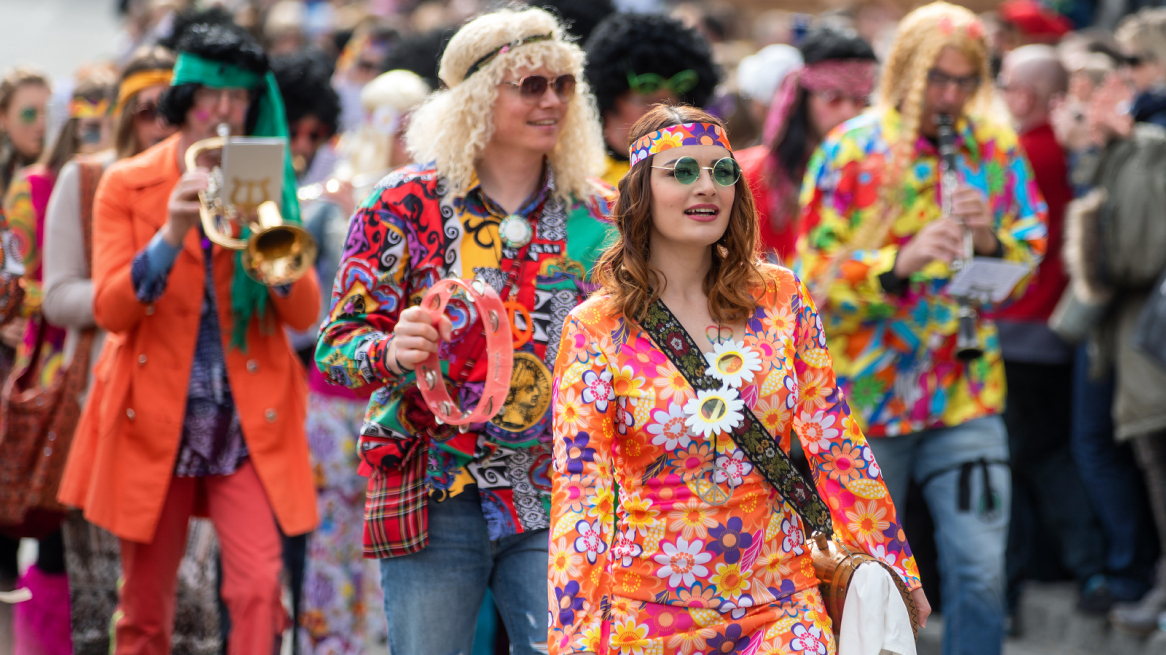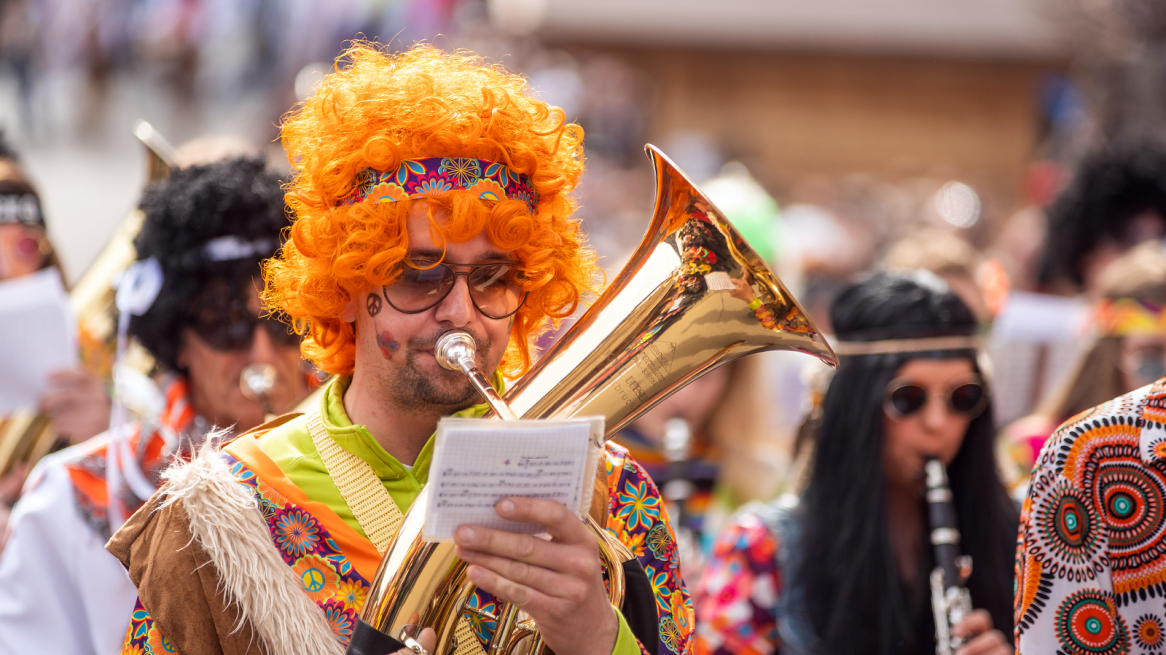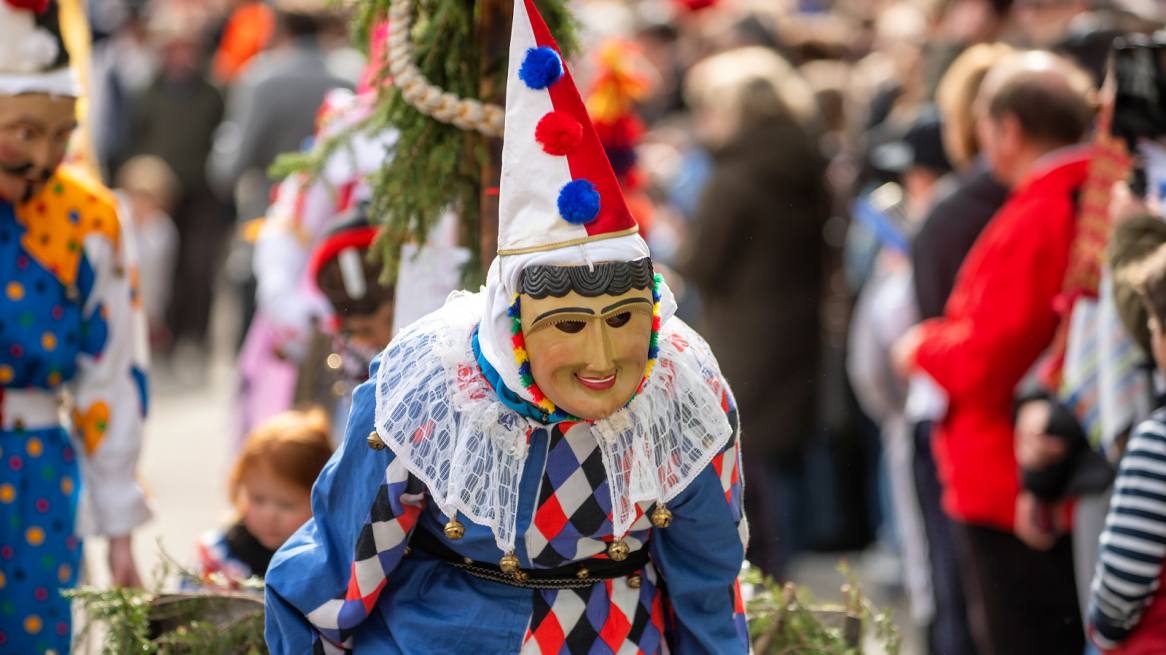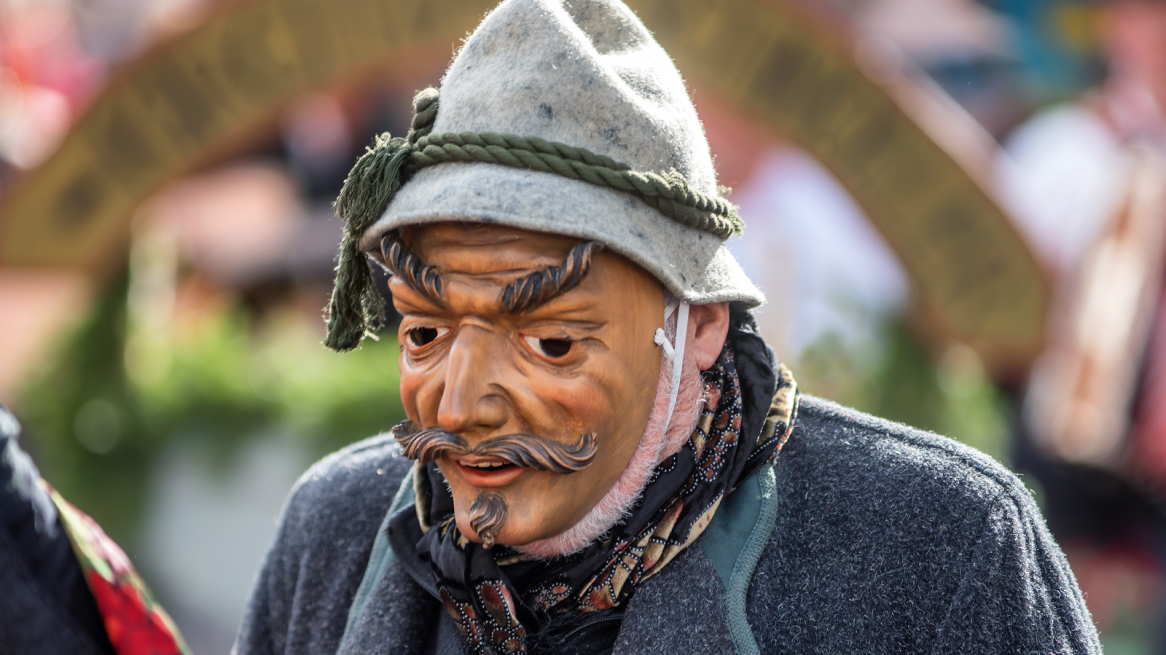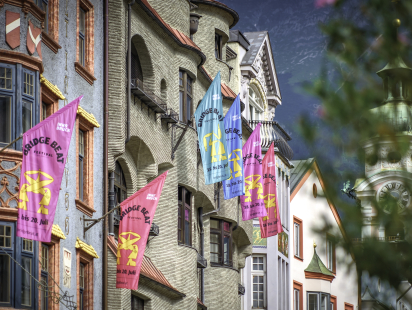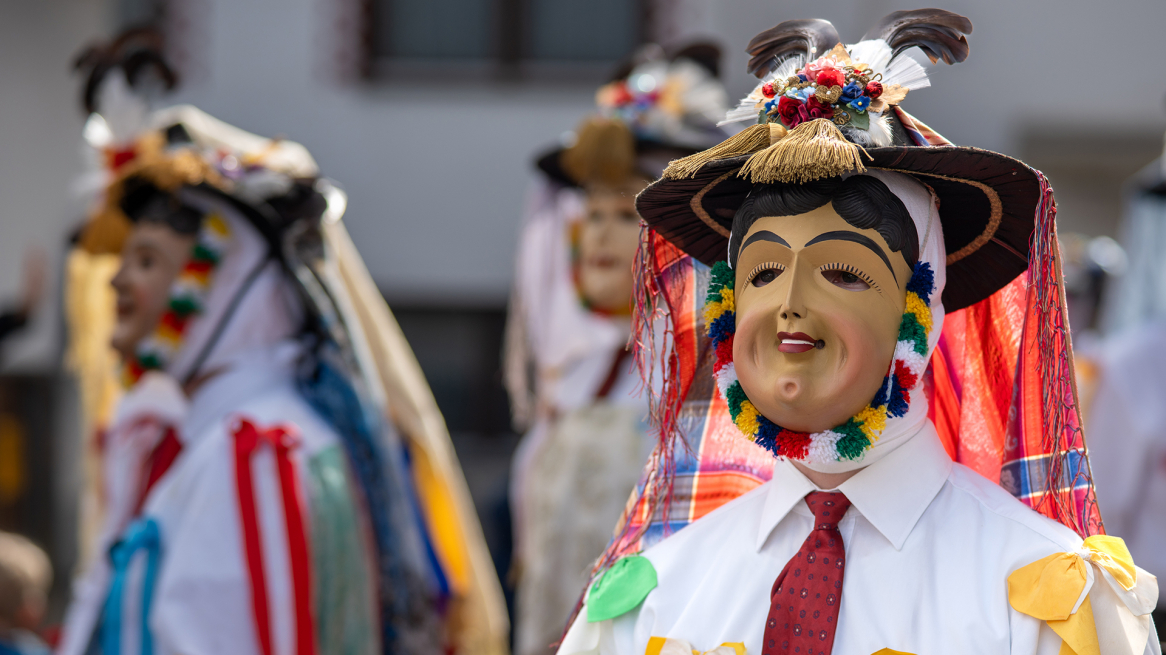
The carnival in Axams is one of the six major traditions of the "fifth season" in Tyrol.
Every four years there is the big carnival parade on Carnival Sunday and every year there is the normal parade on Carnival Thursday.
Always included: the famous Wampelerreiten - a very special tradition that has been part of UNESCO's intangible cultural heritage since 2016.
Traditionally, carnival always begins on the Monday after Epiphany. The so-called „Eintampern“ by the Kirchtagsschnöller opens the "fifth season".
Every Thursday until the end of the carnival, there is the „Banden Gian“ and „Laniger Schaugn“. The various figures, more on this below, parade through the village until midnight and stop off at inns. In traditional practice, the gangs usually perform dances with the innkeepers and guests. As a thank you for the performance, the innkeepers and guests often return the kindness with a schnapps. Each gang is made up of a maximum of 16 so-called Lanigern. During their performances, the gangs are accompanied by an accordion player.
The highlight of the Axamer Fasnacht is always the Wampelerreiten on Carnival Thursday and every four years during the big parade on Carnival Sunday.
What is the Wampelerreiten?
The Wampeler are strong men whose white shirts are filled with hay and straw. They are also equipped with a stick. Legend has it that in the past, people padded themselves with leaves when hunting bears to protect themselves from injury. The wampelers dress in a coarse, white Pfoat (shirt) made of linen and wear a red skirt over trousers, a wide leather belt, sturdy shoes and a stick - both for balance and for defense. Filled with their „Grummit“, the hay from the second mowing, they move through the village in a crouched position. At first glance, this may seem sedate, but in reality it is extremely strenuous. The course of this exhausting custom is governed by clear ("iron") rules.
The so-called riders, their opponents, have the task of attacking the wampelers from behind and throwing them onto their backs. While the attacks may only be made from behind, the wampelers can defend themselves from the front with their stick. The best wampelers are those who still have a white back after the two village rounds, which means that they have not been knocked down.
This battle symbolizes the competition between winter and spring and can sometimes be quite energetic. The Wampelerreiten traditionally ends at the inn, where the Wampeler can recover after their strenuous task. Rumor has it that the recovery phase in the inn can last a very long time ... the thirst must be quenched.
Which figures can be found at the Axamer Fasnacht?
Tuxer
The Tuxer embodies a young, powerful and elegant man. The lively scarves, often made of silk, and the Zillertal women's hat, decorated with flowers and feathers, symbolize spring. In addition, the Tuxer carries a „Goaßl“ (whip), with which he „schnöllt“ (snaps). Through this ritual, he charmingly captures pretty girls, which is considered a special honor. A girl can "free" herself from the Tuxer with a dance or a schnapps.
Flitscheler
The Flitscheler represents another traditional carnival figure and symbolizes fertility. The „Flitschen“ are dried leaves from the corn cob and are attached to a suit. The suit is worn inside out so that the seams are facing outwards. This figure also includes a wooden mask and a hat, which is also decorated with „Flitschen“. The Flitscheler wear around 120 processed corn cobs on their costume.
Witches
The Axamer Kögelehexen are traditional carnival figures. Their outfit consists of a shawl and a silk apron, and they are complemented by the so-called „Nadln“. Compared to other witches, the masks of the „Nadln“ are characterized by somewhat softer facial features. Instead of a broom, the „Nadln“ carry a stick, also known locally as a „Hoagiler“. This is not only symbolic, but can also be used by the „Nadln“ for a light blow if necessary, especially when they are angry.
Altboarisches Ehepaar
The „Altboarische Paarl“, consisting of „Weibitz und Mannitz“, presents itself in elegant clothing and accompanies the procession. They dance to the sounds of waltzes and polkas.
Bluatige
Covered in animal blood, animal entrails around their necks, potato teeth in their mouths, hissing and making scary noises, they creep around ... And always leading the way is "Death" - dressed in a white cloak, a wooden skull mask and a scythe over his shoulder.
Very rarely, and if at all, then only on "Nonsensical Thursday", can you also come across „Bluatige“ in Axams ..
Axamer Bock
The Axamer Bock is an indispensable "mascot", an authentic symbol of the Axamer Fasnacht. The words „Iatz passt’s fein auf, ihr lieab’n Leut’“ begin a poem that is recited every four years at the start of the carnival. This work was written by Franz Jordan, an 18th century poet who lived in the village community. The Bock also gives its name to the carnival newspaper.
The hustle and bustle is complemented by various floats and accompanied by music.
All photos © Danijel Jovanovic Photography - www.djphotography.at
Instagram: @danijeljovanovicphotography
Facebook: Danijel Jovanovic Photography
Rate this article
Show me the location on the map
Professional photographer from Innsbruck, nature enthusiast and animal lover.
Similar articles
Innsbruck has a new summer festival, and that's a good thing! The first BRIDGE…
A new music festival will conquer Innsbruck from July 18 to 20, 2024 to celebrate summer lightness…
The last stage of the 73rd Tour of Austria ends with a tough climb: with hundreds of…
Two years ago, a friend from New Zealand – Katija – came…

